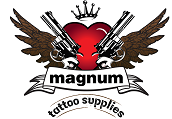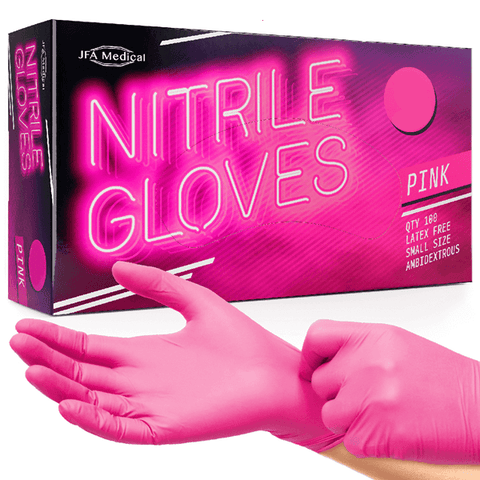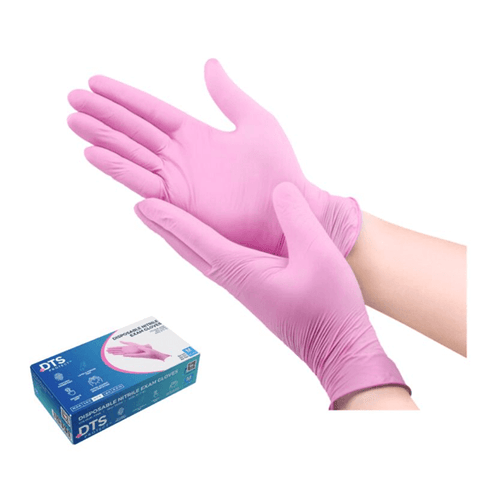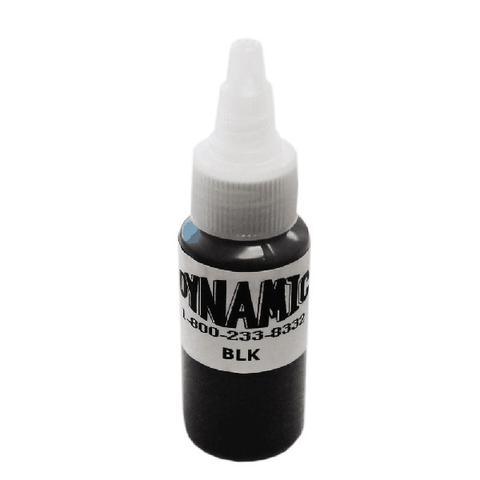How to choose the right nitrile gloves for tattooing

Tattoo artists often face challenges such as allergic reactions to latex, inadequate glove durability, and compromised dexterity, which can impact the precision of their work. With numerous options available, finding gloves that balance protection, comfort, and flexibility can be daunting.
So we will simplify the process by highlighting important considerations to help you select the ideal nitrile gloves for a seamless tattooing experience.
What are nitrile gloves?
Nitrile gloves are disposable gloves made from synthetic rubber. Unlike latex gloves, they are latex-free, making them the best choice for people with latex allergies. Nitrile gloves are known for their high resistance to chemicals, oils, and punctures, making them suitable for use in tattoo industries.
They also provide excellent protection and tactile sensitivity, so they are widely used for various tasks requiring precision and hygiene.
Factors to consider when choosing nitrile gloves
When selecting the right nitrile gloves for tattooing, it's crucial to ensure that they meet the specific needs of the tattooing process while also offering maximum protection and comfort. To ensure the best nitrile gloves, you must consider these key factors:
1. Thickness and durability
Nitrile gloves vary in thickness, typically measured in mils (1 mil = 0.001 inches). The best thickness for tattooing is around 4-5 mils. This thickness provides enough durability to prevent punctures and tears while maintaining sufficient sensitivity for the artist to feel their work. Gloves that are too thick can hinder dexterity, while thinner gloves might not offer adequate protection.
2. Comfort and fit
Comfort is paramount in tattooing, as artists often wear gloves for extended periods. Look for gloves that are ergonomically designed to reduce hand fatigue.
They should fit snugly but not constrictively, allowing for flexibility and dexterity. Some nitrile gloves are designed with textured fingertips to enhance grip, which is especially useful when handling tattoo machines and needles.
3. Chemical and puncture resistance
Nitrile gloves are inherently resistant to many chemicals and punctures, making them suitable for handling the inks and disinfectants commonly used in tattoo studios.
Ensure the gloves you choose have been tested for resistance to the specific chemicals you use. Higher resistance can provide better and more reliable protection against accidental spills like aqueous chemicals, oils and needle sticks.
4. Latex allergy considerations
One of the advantages of nitrile gloves over latex is their hypoallergenic nature. However, some individuals may still experience sensitivities or allergies to nitrile. It's important to choose gloves that are free from added latex and powder, which can exacerbate allergies.
5. Colour and visibility
While not impacting functionality, the colour of your gloves can play a practical role in tattooing. Black gloves are popular in the tattoo industry as they reduce glare, do not show stains easily, and can make it easier to see lighter inks. However, some artists prefer lighter-coloured gloves to better spot any punctures or breaches in glove integrity.
6. Regulatory compliance
Check that the nitrile gloves you choose comply with the relevant safety standards and regulations. In the tattoo industry, gloves should be approved and regulated by the FDA or equivalent in your country. This ensures that the gloves are safe for use in procedures that involve skin contact and exposure to bodily fluids.
7. Environmental considerations
With the increasing awareness of environmental impacts, consider the sustainability practices of the glove manufacturer. Some companies now offer biodegradable nitrile gloves or those manufactured in a more environmentally friendly process.
8. Grades of nitrile gloves
Nitrile gloves come in various grades, each suited for different purposes:
- Medical grade: These are high-quality gloves designed for medical applications and are ideal for tattooing. They meet specific FDA regulations for puncture resistance and barrier protection.
- Industrial grade: These gloves are suited for handling chemicals and machinery but may not be appropriate for the delicate work of tattooing due to their bulkier design.
- Examination grade: Often similar to medical grade but slightly less rigorous in puncture resistance, these are suitable for non-surgical medical tasks and can be used for tattooing as well.
How can you tell the quality of nitrile gloves?
To determine the quality of nitrile gloves, consider these aspects:
- Certifications and standards: High-quality gloves will meet or exceed specific standards such as ASTM and ISO. These certifications ensure that the gloves provide adequate protection.
- Manufacturing consistency: Look for gloves with uniform thickness across the entire surface, as well as consistent colouring and texture.
- Brand reputation: Often, choosing a reputable brand can be a reliable indicator of quality, as these companies adhere to strict manufacturing controls.
Best nitrile gloves for tattoo artists
Unigloves Biotouch - Biodegradable Black Nitrile Gloves
These are designed for tattoo artists who prioritise both performance and environmental responsibility. These gloves are strong, durable, and biodegradable, reducing your carbon footprint without compromising on quality. With a snug fit and textured fingertips, these gloves offer exceptional grip and tactile sensitivity, allowing for precision in your artwork.
Piranha Black Nitrile Gloves
Piranha Black Nitrile Gloves are renowned for their exceptional grip and durability. The robust material protects you from punctures and pathogens, which is crucial when working closely with needles and ink. The black colour minimises glare from studio lights, enhancing visual precision during intricate tattoo sessions. If you're looking for reliability and performance, Piranha gloves are a solid bet.
Uniglove Black Pearl Nitrile Gloves
Sensitive skin can be a significant hurdle for tattoo artists. The Uniglove Black Pearl gloves address this issue with their hypoallergenic formulation. These gloves are free from common irritants and chemicals, reducing the risk of allergic reactions.
Moreover, they have strong protection against chemicals, making them ideal for use with various sterilising agents. Their comfortable fit and fine tactile sensitivity make them perfect for artists who need precision in their work.
JFA Medical Novagrip Powder Free Nitrile Gloves (100)
The JFA Medical Novagrip gloves excel in providing a balance between grip and touch sensitivity. These gloves are powder-free, reducing the risk of contamination and ensuring a clean working environment. The textured finish enhances grip, which is crucial for maintaining steady hand movements.
These gloves are especially beneficial for executing detailed line work or shading, where precision is paramount.
DTS Protect Black Disposable 4.2g Nitrile Gloves
When it comes to handling more extended sessions or working with potentially abrasive materials, the DTS Protect Black Disposable Gloves come into play. These thicker disposable nitrile gloves are designed to offer enhanced protection against punctures and tears. Despite their robust construction, they do not compromise on flexibility or tactile sensitivity, ensuring you can work effectively without feeling restricted.
Common mistakes in selecting nitrile gloves
Not choosing gloves that fit well can lead to discomfort and inefficiency.
- Choosing gloves that are too thick or too thin for the task can compromise either protection or dexterity.
- Opting for cheaper, lower-quality gloves can result in frequent replacements and decreased safety.
- Failing to select gloves resistant to the specific chemicals being handled can expose users to hazards.
- Using gloves unsuited for the specific type of work (e.g., industrial vs. medical) can lead to inadequate protection.
- Some nitrile gloves contain chemical accelerators that can cause allergies, not considering this can lead to reactions.
- Not considering the texture can affect grip and safety, especially in slippery conditions.
- Using non-biodegradable gloves without exploring greener alternatives contributes to environmental pollution.
How to wear, remove, and dispose of nitrile gloves safely
How to wear nitrile gloves
- Wash and dry hands: Before putting on nitrile gloves, you must thoroughly wash your hands with soap and water to remove any contaminants. Dry your hands completely.
- Check for integrity: Inspect the gloves for any rips or tears. Compromised gloves cannot provide proper protection.
- Put on gloves: Take the glove for one hand, hold it by the cuff, and slip your hand inside. Repeat with the other glove. Make sure the gloves fit comfortably and cover the wrist area, especially if wearing short sleeves.
How to remove nitrile gloves
- Pinch and pull: Pinch the outside of one glove at the wrist without touching your skin. Peel the glove away from your hand, turning it inside out. Hold the removed nitrile glove in the gloved hand.
- Slide fingers under the other glove: With your ungloved hand, slide your fingers under the remaining glove at the wrist.
- Peel off and contain: Peel the second glove off over the first glove. This method keeps all contaminants contained within the first glove.
- Dispose properly: Immediately dispose of the gloves in a designated biohazard waste container.
How to dispose of nitrile gloves
- Use appropriate containers: Dispose of used nitrile gloves in designated biohazard containers. These are usually marked and located in areas where biohazardous waste is routinely handled.
- Avoid contamination: Do not touch any surface with contaminated gloves. If you need to touch anything (like a door handle) while disposing of gloves, use a clean barrier such as a paper towel.
- Wash hands after removal: Always wash your hands thoroughly with soap and water after removing and disposing of gloves to ensure any lingering contaminants are removed.
Final thoughts
Choosing the right nitrile disposable gloves for tattooing is key for safety and comfort. Look for gloves that are durable, fit well, and provide good sensitivity for precise work. High-quality nitrile gloves prevent allergies and reduce contamination risks, allowing artists to focus on their art. With the right gloves, you can ensure a safe and enjoyable tattooing experience for both the artist and the client.
- Tags: nitrile gloves product review
- Mark Joshua Luz















